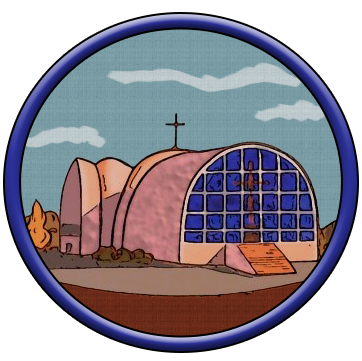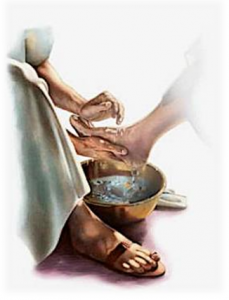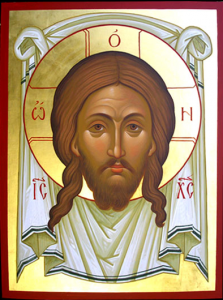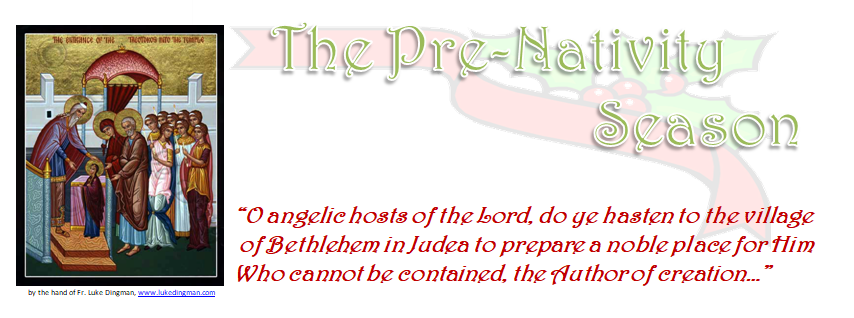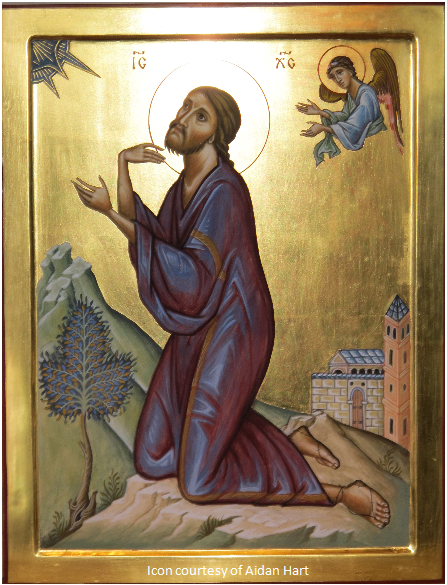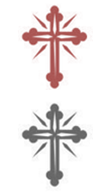Periods of Fast during the Liturgical Year
Why do we fast?
Why do we Fast?
Not eating is a way of using our mealtimes to glorify God who is our true nourishment. Christ Himself fasted, as the gospels record, and he told His followers to do the same. In that way many Church Fathers taught, the Fall, which was caused by eating out of turn, was reversed.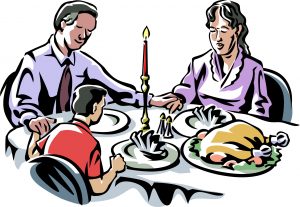
Fasting is the necessary complement to feasting. If feasting is a daily event for us, we are no longer celebrating the Lord when we feast: we are simply satisfying our desires. If we give ourselves over to the rhythm of feasting and fasting, then our table actually becomes a place where God is glorified. All our eating becomes sacramental: a means of communication with the Life-Giver.
There are two ways to fast practiced in our Church. Sometimes they are practiced separately, other times they are practiced in tandem. The first type is the total fast in which we simply do not eat or drink anything. We fast in this way to heighten our sense of preparation or expectation, looking forward to what is to come. In the liturgical tradition a total fast is the ultimate preparation for a feast. This we find on the eves of Christmas and Theophany (Epiphany). We also fast in this way before receiving the Eucharist to help us anticipate the Heavenly Bread we are about to receive. It is a necessary condition for Holy Communion.
The second type of fast is referred to as an ascetic fast, in which we refrain from eating certain foods while eating others. We may remember giving up candies or sweets for Lent as children: this is an ascetic fast. In the Byzantine tradition it is generally meat and dairy products which are subject to the ascetic fast at one time or another.
The purpose of an ascetical fast is to remind us that we don’t need that steak or ice cream: we live as Christ said, not by bread alone. We need Him. This kind of fasting practised over a long period of time, helps us to develop a kind of spiritual strength. By becoming less dependent on satisfying or physical needs, our spiritual muscles harden. And we can do without this or that pleasure, even over a prolonged time, because we know we have the One we really need.
When we begin to fast this way, the first thing we realize is how enslaved we have become to pizza or cheeseburgers. We discover that we are not as spiritual as we might like to think. We find ourselves more dependent on Burger King than on the King of all!
This is the first lesson of fasting. If we persevere through the initial sensation, we will find out that by far and large we can get along without this or that, and that this discomfort serves to heighten our awareness of the Lord’s presence.
Vast numbers of people fast in both these ways for health and beauty: we need not fear to doing it for an experience of God!
Adapted from: Guide to the Domestic Church published by the Melkite Eparchy of Newton
family-saying-Grace-before-a-meal
Fasting and Abstinence - Q&A
Fasting and Abstinence Q&A
What is the difference between fasting and abstinence?
Fasting means to go without food or drink for a determined period of time or to limit the amount of food one consumes. Abstinence is to abstain from eating certain foods, for a period of time.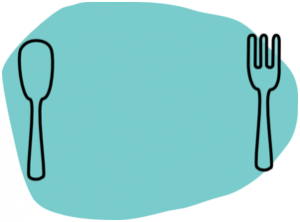
What is the Church’s teaching on fasting & abstinence?
Following the Lord’s teaching, the Church asks the faithful to fast on certain days and to abstain from meat and also from dairy products on certain days.
Doesn’t the Bible teach that, according to the New Covenant, all food is good ?
Yes. Referring to foods considered unclean by the Jews, the Lord told the Chief Apostle St. Peter: “Do not call anything impure that God has made clean” (Acts11:9). In the Old Law, God asked His Chosen People to avoid certain kinds of food altogether. The New Covenant removed these regulations, which were based on dietary precautions. The early Christians were both Jews and Gentiles, and had different dietary customs.
Is fasting not harmful to the body, given to us by God Himself?
Fasting is going without food for a certain period of time. As any human appetite, food can become addictive, or take too much of our human focus. Fasting is an act of the will, whereby we willingly deny ourselves. Self denial helps us control our appetites.
When are the periods of fasting in the Ukrainian Catholic Church? Traditionally, we observe four major fasts in the Ukrainian Catholic Church: Pylypiwka (preparation for the Nativity), The Great Fast (preparation for the Resurrection), Petriwka (preparation for the Feast of the Apostles Peter and Paul), and Spasiwka (preparation for the Feast of the Dormition of the Holy Mother of God). The Petriwka and Spasiwka periods of fast are not obligatory, but of personal choice.
Which days are fast days in the Ukrainian Catholic Church?
After the Second Vatican Council, our Ukrainian Synod reduced the fast days to two: The First Day of Lent and Good Friday.
How are the faithful to observe a fast day?
On fast days, we totally abstain from meat and dairy products and take only one full meal. Other meals should be of smaller proportions, like snacks.
Which days are days of abstinence in our Church?
Ukrainian Catholics are obliged to abstain from meat on Fridays of the year and on the following days: The Beheading of St. John the Baptist (August 29), the Eve of Christmas (December 24), the Eve of Theophany (January 5), the Exaltation of the Holy Cross (September 14).
How can we remember all those days of abstinence?
With only a tiny effort. Parishioners receive a church calendar, on which days of fasting and abstinence are usually marked with a large fish symbol.
Why do we avoid only meat on days of abstinence?
Centuries ago, the Church, using the Power of the Keys (“Whatever you bind on earth will be bound in heaven.” Mt 16:9), chose one particular food from which we can abstain without inordinate difficulty. It is simple to remember to avoid meat on a day of abstinence. In the modern world, we have all sorts of healthy food, other than meat, to choose from.
Are all the faithful obliged to fast and abstain?
Our Church obliges only those from 14-59 years of age to fast and abstain on designated days. Many people over 60 choose to continue to observe the Church’s regulations, which they and their families consistently practiced throughout their lives. Similarly, young children will eat the food that is served in the household.
What about the sick?
Those who are seriously ill should not fast or abstain from meat, if it will harm them. God gave us the gift of our body; we must moderate our appetites with fasting and abstinence, but not harm that body.
What if you must attend an important meal on Friday?
In many Christian countries, even in restaurants, fish is featured on Fridays. When others see us observing the Church regulations, we are setting a good example of how much we value our faith and its practices. In our own homes we must follow Church Law, but when invited to others’ homes, we should never insult them by refusing what they have prepared for us.
Can a priest give dispensation to eat meat on a day of fasting or abstinence?
Not just any priest, but your own parish priest has the jurisdiction to dispense you. Dispensations should not be refused the faithful, except in grave necessity. The point of a dispensation is the self-denial of the will that a Christian must practice by approaching their spiritual father.
What if a feast day falls on a Friday?
We are not obliged to fast or abstain on feast days which are days of celebration. Check your calendar to be certain
What about Fridays immediately following a Solemn Feast?
Solemn Feasts of our Lord & our Lady are celebrated for a full eight days (octave). Thus, Fridays following Solemn Feasts are exempt from abstinence. We refer to those days as zahalnytsia or privileged.
Should we limit our self-denial to obligatory fast days?
Although the Church has greatly relaxed the obligation to fast and abstain, Christians should do so of their own free will, when and if they are able. More important than food, we need to control our other desires through other types of self-denial. Abstaining from sin is the goal of physical self-denial.
What about other traditional days of fasting and abstinence?
In the past, there were many designated days of fasting and abstinence, especially in Lent and Advent. Today, Christians may choose, of their own accord, to observe the traditional fasts.
What about fish, oil and wine?
As stated above, Ukrainian Catholics are obligated to fast on two days of the year and abstain from meat on Fridays. Other Churches may oblige or recommend their faithful to abstain from fish, oil and wine. Geared to a Mediterranean diet, these regulations do not pertain to our Church.
What other ways do we practice self-denial in Lent?
Besides fasting and abstinence, throughout Great Lent we should refrain from joyous celebrations, dancing and other entertainments. When in doubt, you can approach your parish priest for a dispensation.
Does Advent exist in the Ukrainian Catholic Church?
Yes. Ukrainian Catholics refer to the pre-Christmas fast period as Pylypivka or St. Philip’s Fast, as it always begins on the feast of St. Philip the Apostle, November 14. Unlike the Latin Rite, our Advent is not a liturgical season; we do not see any changes in the Divine Liturgy, Vespers or Matins. Traditionally, we abstained from meat on Wednesdays and Fridays of Pylypivka & Great Lent.
Doesn’t fasting and abstinence belong to a culture of the past?
No. Christ taught us that certain evils “can only be driven out by prayer and fasting” (Mt 17:21). Self-denial and penance are direct teachings of Christ and can never be changed by the Church. Catholics often fast for peace and for other important intentions.
Adapted with appreciation from: St. Nicholas Ukrainian Catholic Church, Winnipeg at Fasting and Abstinence
Prescribed Days of Fasting and Abstinence
Prescribed Days of Fasting and Abstinence
![]() Which days are fast days in the Ukrainian Catholic Church?
Which days are fast days in the Ukrainian Catholic Church?
After the Second Vatican Council, our Ukrainian Synod reduced the fast days (those in which we limit how much we consume and abstain from meat and dairy products) to two: the first day of Lent and Good Friday.
Which days are days of abstinence in our Church?
In addition to the prescribed fasting days, Ukrainian Catholics are obliged to abstain from meat on Fridays throughout the year and on the following days:
- the Beheading of St. John the Baptist (August 29)
- the Eve of Christmas (December 24)
- the Eve of Theophany (January 5)
- the Exaltation of the Holy Cross (September 14)
Exemptions
Solemn Feasts of our Lord & our Lady are celebrated for a full eight days (octave). Thus, Fridays following Solemn Feasts are exempt from abstinence. We refer to those days as zahalnytsia or privileged. These include the Fridays at the following times:
- Nativity of Our Lord to the eve of Theophany (December 25-January 4)
- From the Sunday of the Publican and Pharisee to the Sunday of the Prodigal Son
- Bright Week (from Holy Pascha to Thomas Sunday)
- Pentecost to Sunday of All Saints (the Sunday after Pentecost)
How can we remember all those days of abstinence?
With only a tiny effort! Parishioners receive a church calendar, on which days of fasting and abstinence are usually marked with a large fish symbol.
Those exempt from fasting and abstinence are:
- Children under the age of 14
- Adults over the age of 60
- those who are gravely ill
- pregnant women
- post-partum mothers
- breast-feeding mothers
- travellers (if travel time exceeds 8 hours)
- those engaged in heavy labour
- those who eat from the table of others
- the poor who live from charity
Text adapted with appreciation from St. Nicholas Ukrainian Catholic Church’s Fasting & Abstinence FAQ
Almsgiving and Fasting
Almsgiving and Fasting
Sharing what we have
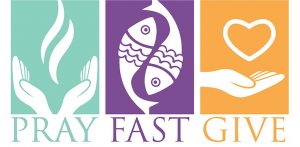
“Prayer and fasting are good, but better than either is almsgiving accompanied by righteousness … It is better to give alms than to store up gold; for almsgiving saves one from death and expiates every sin. Those who regularly give alms shall enjoy a full life” (Tobit 12:8-9).
Why is almsgiving better than prayer and fasting? Because it is prayer, and it involves fasting. Almsgiving is a form of prayer because it is “giving to God” — and not mere philanthropy. It is a form of fasting because it demands sacrificial giving — not just giving something, but giving up something – giving till it hurts. The giving of alms is giving to those in need, whoever or wherever they are.
The practice of almsgiving is based on this:
- Everything we have comes from God. Everything is a gift.
- Every gift is given for the good of all. The gifts and talents we receive are meant to be shared.
- God has gifted us with enough to meet our daily needs and even over and above that for almsgiving.
There are two main reasons why we should give alms. The first reason is to help others. The second reason is to help ourselves.
The first reason, helping others, is rather obvious. There are many people in need in our world those that are starving in distant lands, victims of natural disaster in our own land, and those in our own communities who have not enough to get by on. They need help and we have more than we need. Therefore, we should do something to help them. Our words about how sad it is that there are needy people won’t help them — our actions can. God has commanded us to love one another. If we love one another, then we must help each other out in times of need.
The second reason to give alms is to help ourselves. No, the money isn’t going to come back to us with interest so that we’ll make a profit in the long run. However, there are some very real paybacks from giving alms.
There’s a payback in this life in spiritual growth. The Church Fathers are unanimous that almsgiving is one of the best ways to work on becoming a mature and healthy Christian and that’s a very good payback indeed! Why is giving our money away so spiritually healthy? Because we all greatly love money and what it does for us. Giving some of it away is hard. It’s one of the most direct and concrete ways of practicing self-denial, of taking up our cross and following Christ. What hurts is often healthy for us. Giving away our money hurts badly — and it’s very healthy!
Do you wish to grow spiritually? Start giving money to the poor and you will, as long as you’re careful to heed one warning given by our Lord. Give in such a way that others don’t know about it and so that even your left hand doesn’t know what your right hand is doing. Guard against pride and showing off or you’ll end up worse off than ever.
The second payback we get from giving alms comes after this life is over. The Scriptures say that on Judgment Day we will answer for every word and deed in this life. That sounds quite frightening, but the Fathers say there will be someone to stand up for us and defend us on that day before the dread judgment seat of Christ. The Fathers say the beggars we have given to in this life will speak for us and plead for mercy for us. They will argue that we can’t be all bad because we helped them in their time of need. When we think about going to heaven we usually think about being greeted by the saints and the angels. Someone else will also greet us — the poor whom we have helped.
Daily we should make the choice to give of our time, our attention, and we should give generously. We need to dig deep and give much where much is needed. We need to identify what our essential needs are and what are luxuries. To carry out God’s call we may need to simplify our lifestyles.
Almsgiving is not limited to financial support. Whenever possible, our charity should involve personal acts, not just automatic withdrawals from our bank account. People may be in need of a sympathetic ear, a smile, a word of encouragement.
Sometimes all we can give is a smile, but sometimes that is the greatest sacrifice, the greatest prayer, and indeed the most generous and most sacrificial alms. Now during this time of preparation for Pascha, let us remember to make almsgiving a priority.
Adapted with appreciation from:
Antiochian Orthodox Christian Archdiocese of North America at Almsgiving is Christian
THE GREAT FAST
Why Pre Lent Sundays?
Why Pre Lent Sundays?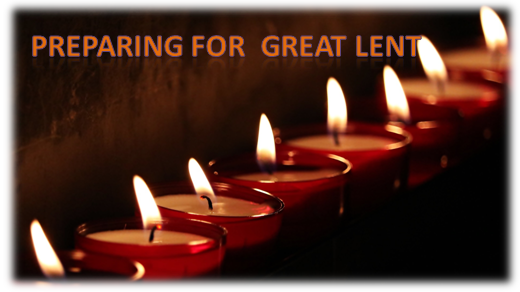
There exists a pre-lenten preparation in the Church.Why is this so?
In his now-classic book Great Lent, Father Alexander Schmemann provides the following insight: “Because of the deep psychological insight by the Church into human nature. Knowing our lack of concentration and the frightening ‘worldliness’ of our life, the Church knows our inability to change rapidly, to go abruptly from one spiritual or mental state into another. Thus, long before the actual effort of Lent is to begin, the Church calls our attention to its seriousness and invites us to meditate on its significance. Before we can practice Lent we are given its meaning. This preparation includes five consecutive Sundays preceding Lent, each one of them – through its particular Gospel lesson – dedicated to some fundamental aspect of repentance.”
If one is to find meaning in this period of pre-lent, one must be pro-lent! We need to look forward to Great Lent, not as a burden to be endured; but as a season of renewal to be embraced – eagerly and decisively.
- On the first pre Lenten Sunday, we see Zacchaeus who shows a great desire to see Christ.
- Humility is the theme of the second Sunday, called the Sunday of the Pharisee and the Publican. The Lord’s parable in Luke 18:10-14 teaches us that fasting with pride is rejected by God. (For this reason there is no fasting during the week following this Sunday.)
- Repentance is the theme of the third pre Lenten Sunday called the Sunday of the Prodigal Son. Before we can return to God, we must recognize that because of sin, we are far from God. Like the prodigal son (Luke 15:11-31), we are in self-imposed exile. Will we come to our senses are return to the Father as did the Prodigal Son?
- The next Sunday is referred to by two names, or Meat fare Sunday or the Last Judgement. The second name refers to the Gospel lesson (Matthew 25:31-46) read on that day. The Lord tells us we will be judged at the end according to the love we showed for our brothers and sisters. “For I was hungry… thirsty… a stranger… naked … in prison… sick… To extent that you did it to one of these brothers of Mine, even the least of them, you did it to Me.” Almsgiving goes hand in hand with fasting. This Sunday is called Meat fare because it was the last day that meat, fish, or poultry was eaten before Pascha (Easter), for those keeping the Great Fast.
- The last pre Lenten Sunday is referred to by several names: Cheese Fare Sunday, Adam’s Lament, or Forgiveness Sunday. This was the last day that dairy products were eaten before the Great Fast. This final Sunday before Great Lent has two themes: it commemorates Adam’s expulsion from Paradise, and it accentuates our need for forgiveness. There are obvious reasons why these two things should be brought to our attention as we stand on the threshold of Great Lent.
The Gospel message (Matthew 6:14-21) read on this days tells us that our fast must not be hypocritical or “for show”. Our work and our appearance are to continue as usual, and our extra efforts are to be known only to God. The Gospel also reminds us that God the Father will forgive us in the same manner as we forgive each other. With this promise of forgiveness, the Great Fast begins…
Excerpted and adapted from:
Orthodox Church in America at The-week-of-zacchaeus-embracing-pre-lent-by-being-pro-lent
Additional Source:
Great Lent by Father Alexander Schmemann
Zacchaeus Sunday
Sunday of the Publican and the Pharisee
Sunday of the Prodigal Son
Meat-Fare Sunday
Cheese-Fare Sunday
When does the Great Fast begin?
When does the Great Fast begin?
Lent actually begins on Monday, the day after Cheese-Fare Sunday. Since the Church day always begins at sunset, our first Lenten service is on Sunday evening. During this beautiful Vesper service the faithful approach the priest and each other to ask for mutual forgiveness before embarking on the journey of the Great Fast.
The question of the forty days of Lent takes on some confusion when comparing ourselves with the Roman Catholic Church. We don’t have Ash Wednesday. The Western Church begins the holy season on Wednesday with their proper services. The Eastern Churches start two days earlier because we use a different counting system to arrive at the traditional forty days.
The Western lent consists of forty days excluding Sundays – leading up to Easter Sunday. The Eastern Churches keep forty days without interruption (including Sundays) leading up to Lazarus Saturday, the first day of Holy Week. The Holy week is considered to be a separate fast. This accounts for the different starting date. If you count back 40 days (including Sundays) from the Friday before Lazarus Saturday, you will have the start of the observance of the Eastern Christian Great Fast.
Eastern Christians do not observe the Great and Holy Week (the week before Easter Sunday) as part of the fast. The events of this week are so extraordinary and have such a deep and profound meaning to our salvation that they merit consideration apart from the Great Fast. It has an even more intense spirit of solemnity and fasting.
While the number of days in the Great Fast is important, we must remember that 40 was chosen as a symbolic number. It is the time both Moses and Elijah spent preparing to meet God in a very intense, personal and special way. It is also the number of days Christ went to fast and pray in the desert before beginning his public ministry. These 40 days are meant to be a time for us to prepare to meet God in a deeper, more personal way and a time for us to become more Christ-like.
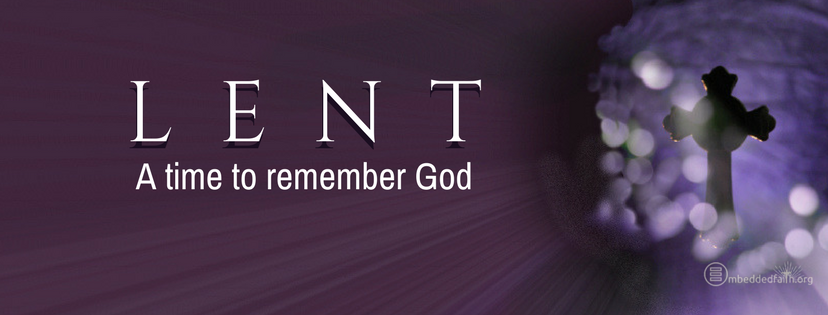
Image courtesy of embedded-faith/category/lent
Sundays of the Great Fast
Sundays of the Great Fast
The Journey to the Empty Tomb
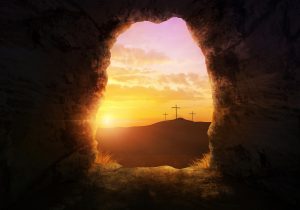 For most of us, unaccustomed as we are to real spiritual struggle, the Great Fast can be uncomfortably demanding. After the first week of fast in one’s prayers and prostrations, we begin to tire and may even feel despondent at the thought of the weeks ahead. But the Church in her wisdom knows well our human frailty and encourages us to persevere in our struggles by giving us along the way inspiring examples, incentives and even glimpses of that which awaits us at our journey’s end. Week after week, Sunday after Sunday, we are led deeper into the spirit of repentance and self-denial, while we see growing brighter before us the radiance of Christ’s resurrection.
For most of us, unaccustomed as we are to real spiritual struggle, the Great Fast can be uncomfortably demanding. After the first week of fast in one’s prayers and prostrations, we begin to tire and may even feel despondent at the thought of the weeks ahead. But the Church in her wisdom knows well our human frailty and encourages us to persevere in our struggles by giving us along the way inspiring examples, incentives and even glimpses of that which awaits us at our journey’s end. Week after week, Sunday after Sunday, we are led deeper into the spirit of repentance and self-denial, while we see growing brighter before us the radiance of Christ’s resurrection.
The first Sunday of the Great Fast, called the Sunday of Orthodoxy, celebrates the ending of the iconoclast heresy and the restoration of icons to the Churches in 813 A .D. by the blessed Empress Theodora. Icons are important in that they affirm the dogma of the Incarnation of our Lord and Saviour Jesus Christ—the Word of God made flesh. As this dogma is central to Christianity, the victory over the Iconoclasts came to broadly represent the victory of the true faith over all errors. The Epistle reading (Heb. 11:24-26, 32-12:2) presents us with examples of saints, “icons” of Christ, who struggled and suffered, many enduring martyrdom for the sake of defending and preserving the Faith whose triumph we celebrate on this day.
The Gospel reading (John 1:13-51) is also appropriate in this early stage of our Lenten journey. In answer to Nathaniel’s question, “How do you know me?” Jesus replies mysteriously “I saw you while you were still under the fig tree before Philip called you.”, whereupon Nathaniel confesses Him to be the Son of God. What it was that Nathaniel was thinking under the fig tree we do not know, but Christ penetrated his innermost thoughts, just as He mysteriously penetrates our hearts when He calls us to Himself. And He calls us now, during this Lenten period, to rededicate ourselves to Him, to the true faith of holy Orthodoxy, and to declare with all the saints: “One Lord, one Faith, one Baptism, One God of all.”
The second Sunday is dedicated to St. Gregory Palamas (1296-1359), an ascetic who became Archbishop of Thessalonica. In many ways it is a continuation of the celebration of the triumph of Orthodoxy.
St. Gregory successfully fought against a prevailing heresy of his day which denied the possibility of ever experiencing or knowing God–in a way surpassing the knowledge of the mind. Adherents of this heresy claimed that in this life one could only know about God. St. Gregory made a distinction between the divine essence of God, which remains inaccessible to men, and the divine energies, such as the light of Mt. Tabor, which are uncreated but accessible to human vision. From his own mystical experience, St. Gregory defended the possibility of attaining true union with God, which is, in fact, the aim of all Christian endeavor: “The kingdom of God lies within” (Luke 17:21). This is the essence of the teaching called hesychasm which advocates the constant repetition of the Jesus Prayer and quieting of both soul and body in order that the prayer might act to warm the heart with unceasing remembrance and burning love for God. What greater incentive can there be in our struggle for perfection during Lent–and throughout our lives?
Midway through the fast, on the Third Sunday of the Great Fast, we are given the image of the holy Cross. This serves to remind us of Our Lord’s Passion through which we were redeemed and which we are soon to witness. Midway on our journey to Holy Week and Pascha, many of us are tiring of our spiritual disciplines. What we approached with joy the first week has now turned into a chore. We have become aware how little love we have in our hearts, which can be very discouraging. For this reason, the Church uses this Sunday to direct our attention to the Cross. The Cross is our strength and our salvation. We look to it and pray to Christ to give us strength to complete this journey.
The Gospel reading for this Sunday (Mark 8:34-9: l) impresses upon us the importance of carrying our own cross. We too must be crucified; we must die to our passions, to our egos, if we wish to reign with Christ. More than a symbol of death, however, the Cross is an emblem of victory, and the dominant tone of this Sunday and the week that follows is one of joy, that through His death on the Cross, Christ destroyed the power of death and reopened unto fallen mankind the doors of Paradise.
The fourth Sunday is dedicated to St. John Climacus, the seventh-century ascetic desert father who wrote the book, The Ladder of Divine Ascent (“Klimacos” in Greek means ladder). This is a handbook which sets forth various steps in the progress towards Christian perfection, thereby leading those who faithfully practice these instructions to mount step by step to heaven. Although originally written for monks, The Ladder is a spiritual classic appointed by the Church to be read during the weekday Lenten services. The importance of ascetic struggle–which should be of particular concern to us during the Holy Lent–is supported by the Gospel reading (Mark 9:17-31) which stresses the need for prayer and fasting.
The fifth Sunday presents us with another example of an ascetic struggler, St. Mary of Egypt. The emphasis here is on repentance and on God’s abundant mercy towards repentant sinners. On Thursday of the fifth week there is a service called “St. Mary’s vigil ,” during which the Canon of St. Andrew of Crete is read, together with the life of St. Mary. After many years of debauchery, St. Mary repented, and spent the rest of her life in a desert in prayer and fasting. The Church holds her as an example that no one should despair of their sins; even the greatest sinner can become a saint through repentance.
The forty days of Lent end the following Friday, as we prepare for Lazarus’ Saturday, followed by Palm Sunday and Passion Week. During this Friday service we sing “Having now finished the soul-healing forty days, grant us, Lover of mankind, to witness the holy week of Thy Passion.” With what is left to us of this holy Lenten season, may we truly give ourselves over to the cleansing of our souls that we may with enlightened minds and hearts shout Hosanna to our King and worthily celebrate His glorious Resurrection!
The Challenge of Fasting and the Great Lent
The Challenge of Fasting and the Great Lent
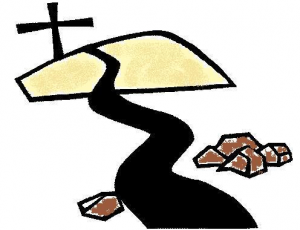
The Triodion:
The Great Fast is the 40 day season of spiritual preparation that comes before the most important feast day of the Christian year, Holy Pascha, (which means Passover, but is commonly called Easter). It is the central part of the larger time of preparation called the Triodion.
The Triodion is divided into three main parts: Pre Lenten weeks of preparing our hearts, 6 weeks of Lent, and Holy Week. The main theme of the Triodion is repentance – mankind’s return to God, our loving Father.
The annual season of repentance is a spiritual journey with our Saviour. Our goal is to meet the risen Lord Jesus, Who reunites us with God the Father. The Father is always waiting to greet us with outstretched hands. We must ask the question, “Are we willing to turn to Him?”
During the Great Fast the Church teaches us how to receive Him by using two great means of repentance – prayer and fasting.
However, to many of us Lent seems to be a bunch of rules and guide lines, but it is definitely more than that! It is a time to soften our hearts and open them to God. The Great Fast is characterized by a “sad brightness”. “Sad Brightness: the sadness of my exile, of the waste I have made of my life; the brightness of God’s presence and forgiveness, the joy of the recovered desire for God, the peace of the recovered home.” (Alexander Schmemann, The Great Lent)
How can we, in a post-modern society, observe Lent? Daily attendance at Lenten worship is not practical for most. Sundays during Lent reflect the Resurrection, not Lenten worship. Our culture isn’t “Lent-friendly”. Generally, Lent is seen in a negative way (a giving up of something) and as a time to fulfill obligations (yearly confession and communion). Lent may be observed through custom and tradition, but does it change our lives and bring us closer to our Creator? How do we live the Great Fast, not just observe its traditions?
We can live Great Lent by increasing our attendance at Church and intensifying our participation in the services we attend. Forgiveness Vespers expresses so well the meaning of Lent and is held on the evening of Cheese-Fare Sunday, the beginning of the Great Fast. The Great Canon of St. Andrew takes us into the “bright sadness” of Lent during the first week of the Fast. The Liturgy of the Pre-sanctified Gifts embodies the spirit of “bright sadness” on Wednesdays and Fridays throughout Lent.
We can live Great Lent by truly fasting. Fasting is not just giving up something or following the letter of the law on dietary regulations. “To fast means to be Hungry – to go to the limit of that human condition which depends entirely on food and, being hungry, to discover…that hunger is first of all a spiritual state and that it is in its reality hunger for God” (Alexander Schmemann). Fasting is meaningless, even dangerous, without prayer. True fasting always leads to temptation, weakness, doubt, and irritation. We need to ask God for help in fasting and to make relationship with Him the centre of our fast.
We can live Great Lent by letting our lifestyle support our Lenten efforts. If we are watching television and movies and listen to music that promote sex, money, and personal gratification as primary goals, our lifestyle is not supporting our Lenten efforts. We have to live and work in a secular world. Perhaps Lent would be a good time to look at our jobs and relationships through the eyes of faith and make positive changes.
It is a challenge to live the Great Fast. We must make a decision to do so and follow-through. If we only do things that fit well into our lives, there will not be much meaning in our efforts. We will struggle and fail. We can give up or we can try again. If we do not give up, even if we fail many times, our efforts will bear fruit.

Fasting:
The word “fast” means not eating all or certain foods. As faithful, we can fast completely at certain times of great importance, and especially each time before receiving Holy Communion. Usually, fasting means limiting the number of meals and/or the type of food eaten.
The purpose of fasting is to remind us of the Scriptural teaching, “Man does not live by bread alone.” The needs of the body are nothing compared to the needs of the soul. Above all else, we need God, Who provides everything for both the body and the soul. Fasting teaches us to depend on God more fully.
The first sin of our parents, Adam and Eve, was eating from the forbidden tree (Genesis 3:1-19). We fast from food, or a food item, as a reminder that we are to fast from sinning and doing evil.
There are several benefits of fasting. Fasting helps us pray more easily. Our spirit is lighter when we are not weighed down by too much food or food that is too rich. Through fasting, we also learn to feel compassion for the poor and hungry and to save our own resources so that we can help those in need.
Fasting is more than not eating food. Saint John Chrysostom teaches that it is more important to fast from sin. For example, besides controlling what goes into our mouths, we must control what comes out of our mouths as well. Are our words pleasing to God, or do we curse God or our brother? The other members of the body also need to fast: our eyes from seeing evil; our ears from hearing evil; our limbs from participating in anything that is not of God. Most important of all, we need to control our thoughts, for thoughts are the source of our actions, whether good or evil.
Fasting is not an end in itself. Our goal is an inner change of heart. The Great Fast is called “ascetic.” This refers to actions of self-denial and spiritual training which are central to fasting. Fasting is a spiritual exercise. It is not imposed or forced upon us. In the same way that true repentance cannot be forced upon anyone, each of us makes the choice to turn away from our sinful ways and go toward our loving, forgiving Father in Heaven.
Adapted with thanks from an article by the Antiochian Orthodox Christian Archdiocese of North America For more see: Go Beyond Giving up Something for Lent
Why Should I give up Something for Lent? What Should I give up?
“I invite you, therefore, in the name of the Church, to the observance of a holy Lent…”
Why Should I give up Something for Lent?
 The short answer: Because it’s good for you. Because Jesus went all alone into the desert for 40 days to show us how to deny ourselves for our soul’s good, we shall spend 40 days trying to follow His lead. Really, though, you certainly don’t HAVE to give something up over and above what the Church regulations require of us, and in fact many people don’t. Many faithful Christians will actually go to the alternate route and ADD something instead, such as increased prayer time, daily devotions, increased giving, etc. And that’s great too!
The short answer: Because it’s good for you. Because Jesus went all alone into the desert for 40 days to show us how to deny ourselves for our soul’s good, we shall spend 40 days trying to follow His lead. Really, though, you certainly don’t HAVE to give something up over and above what the Church regulations require of us, and in fact many people don’t. Many faithful Christians will actually go to the alternate route and ADD something instead, such as increased prayer time, daily devotions, increased giving, etc. And that’s great too!
But if there is anything that is getting in the way of your relationship with God, now is a great time to get rid of it, either for the time being, better yet, forever.
The point of giving something up for lent isn’t just to break a bad habit or to start a good one, nor is it to follow a rule because you’re “supposed to”. It is a way for Christians to imitate Christ (remember his 40 days of fasting in the desert before He began His public ministry?), to grow in self-control, to root out sin and distraction, and to increase in holiness.
What Should I Give Up for Lent?
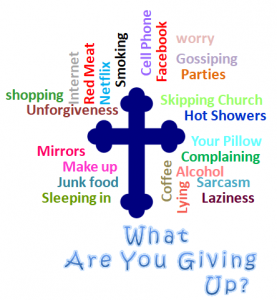 The choice of what to give up for Lent is a personal one, and the things people choose vary widely. You really could choose just about anything you want. Ideally, however, you will want to choose something that is getting in the way of your spiritual life, or something that, by removing it, will allow you to grow closer to Christ.
The choice of what to give up for Lent is a personal one, and the things people choose vary widely. You really could choose just about anything you want. Ideally, however, you will want to choose something that is getting in the way of your spiritual life, or something that, by removing it, will allow you to grow closer to Christ.
1.The first step in fasting is obeying the law of the Church:
Simple Fasting requires the faithful not to consume meat during all Fridays throughout the year, including the Holy season of great Lent, with certain exceptions. Simple fasting is recommended on the Wednesdays during the Holy season of Lent for the intention of world peace, gratitude for the gift of life and for the vocations to the priesthood and the religious life.
Strict fasting requires the faithful not to consume meat, eggs and dairy products and any foods containing those products. Strict fasting is prescribed for the first day of Great Lent and on Good Friday.
-
-
- Add more – As Catholics, we should never be satisfied with the bare minimum. Give up something you love.
- Fast from sin – Bodily fasting is meaningless unless it is joined with a spiritual fast from sin.
- Fast from wasting time on empty endeavours – Increase the amount of time spent in prayer. Fasting is not simply a matter of will power. Grace is absolutely necessary. While fasting energizes prayer, prayer energizes fasting. Both are weak without the other.
- Fast from your free time – Attend Lenten services with a true desire to be there; do good works instead of enjoying your free time doing other activities.
- Fast from pride – With any kind of self-discipline, penance, or fasting comes a temptation to pride. We face the danger of believing that we are superior to others because we fast, or thinking that fasting is an end in itself. But fasting itself is never the goal, nor does it make us perfect or more spiritual than others. Rather, fasting is an aid, a training tool in our ascent toward perfection, which is found in a pure, self-giving love of God and neighbor.
-
‘So why do Catholics fast? ‘ “As one person put it: “It’s medicine for my biggest problem — selfishness and lack of self-control. To force myself to curb my appetites, to not satisfy my desires — even for a short period of time — this is a good thing. To offer up the little sacrifice to God, for my family, for people who are hungry through no choice of their own, this I think is also good.” ‘ Mike Aquilina Excerpted and adapted with appreciation from: Equipping Godly Women at what-should-i-give-up-for-lent/
GREAT AND HOLY WEEK
Great and Holy Week
Great and Holy Week
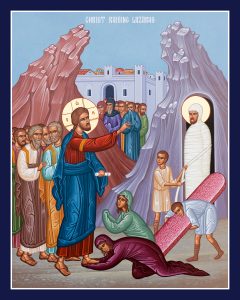
By the hand of Father Luke Dingman,www.lukedingman.com
Lazarus Saturday
Lazarus Saturday concludes Great Lent. On this day we remember Christ’s raising of Lazarus from the dead and the promise of universal resurrection for us all. Lazarus Saturday provides a bridge to Holy Week during which the Church services remember Christ’s Passion, the last week before His Crucifixion and Resurrection. Technically, in the Eastern Church, Holy Week is a separate season from The Great Fast. Whereas, during The Great Fast each week has its own theme, during Holy Week each day has its own theme, based on the Gospel readings of the day.
Great and Holy Monday, Tuesday and Wednesday
The theme of the first three days of Holy Week is that of Christ as Bridegroom, and the days are therefore referred to as the Bridegroom Days. The Bridegroom services are derived from the Parable of the Ten Virgins, which calls for preparedness at the Second Coming, for the “thief comes in the middle of the night”. The title Bridegroom suggests the intimacy of love. It is not without significance that the Kingdom of God is compared to a bridal feast and a bridal chamber. The Christ of the Passion is the Divine Bridegroom of the Church. The imagery suggests the final union of the Lover with the beloved. The main emphasis of the Bridegroom Service is metanoia (change of heart) and each service has its own particular theme on repentance and watchfulness. One of its primary features is its troparion:
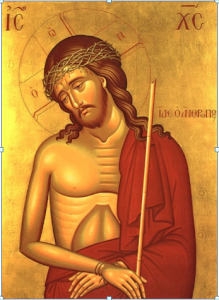 “Behold, the Bridegroom comes in the middle of the night, and blessed is the servant He shall find vigilant; but unworthy is he whom he shall find neglectful. Beware therefore, O my soul, lest you be weighed down by sleep, lest you be given over to death and be closed out from the kingdom; but rise up crying out: “Holy! Holy! Holy are You our God; through the intercessions of the Theotokos, have mercy on us.”
“Behold, the Bridegroom comes in the middle of the night, and blessed is the servant He shall find vigilant; but unworthy is he whom he shall find neglectful. Beware therefore, O my soul, lest you be weighed down by sleep, lest you be given over to death and be closed out from the kingdom; but rise up crying out: “Holy! Holy! Holy are You our God; through the intercessions of the Theotokos, have mercy on us.”
The icon depicts Christ as the Bridegroom of the Church, bearing the marks of His suffering, yet preparing the way for a marriage feast in His Kingdom. He is dressed in a cloak which the Roman soldiers put on Him, mocking Him as “King”.
The crown – is a symbol of His marriage to the Church
The rope – is a symbol of bondage to sin, death and corruption which was loosed with Christ’s death on the Cross.
The reed – is a symbol of His humility; God rules His Kingdom with humility. This icon is also known as the Icon of Extreme Humility: To know what humility is we must look to Christ; to know how we gain humility, again we look to Christ. What is the ultimate humility according to this icon?
“At the arrival of unjust persecution, bow your head. At the jeers of false accusations, cross your arms over your heart, whether physically or interiorly, and gratefully receive what is spitefully offered. And when faced with the question, ‘How far, how far do I tolerate this shame, this injustice, remember the answer is the grave. This is what the icon labels ‘Extreme Humility’, and it is humility that we must strive to emulate each day.”
Hieromonk Irenaeus
Great and Holy Wednesday
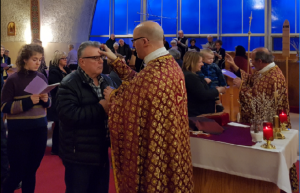 During the Presanctified Liturgy on this day a gospel reading (Matthew26: 6-16) is included. (This gospel reminds us that on this day Judas made the decision to betray Jesus.) Within the past two centuries, the practice has developed to include the mystery of the Anointing of the Sick, commemorating Christ’s anointing with myrrh. The service includes the priest anointing the faithful with holy oil, the visible carrier of the grace of God. The mystery of the Anointing of the Sick provides both physical and spiritual healing with the holy oil blessed by the Holy Spirit.
During the Presanctified Liturgy on this day a gospel reading (Matthew26: 6-16) is included. (This gospel reminds us that on this day Judas made the decision to betray Jesus.) Within the past two centuries, the practice has developed to include the mystery of the Anointing of the Sick, commemorating Christ’s anointing with myrrh. The service includes the priest anointing the faithful with holy oil, the visible carrier of the grace of God. The mystery of the Anointing of the Sick provides both physical and spiritual healing with the holy oil blessed by the Holy Spirit.
Holy Thursday
On Holy Thursday, the Liturgy of St. Basil is celebrated with Vespers. Jesus drew His last breath of freedom on this Thursday night. Christ knew all the events which were about to take place. He gathered His apostles in order to institute the Holy Eucharist for them and for the Church forever. Christ presented Bread and Wine as the Elements of His very Body and His very Blood; they are the Precious Gifts which have been left as His Perpetual Presence in the Church. The institution of the Holy Eucharist and its re-enactment throughout the centuries, both as a sacrifice and sacred ceremony, is the life giving remembrance which, along with the Crucifixion and Resurrection of Christ, constitutes the basis of salvation for the Christian.
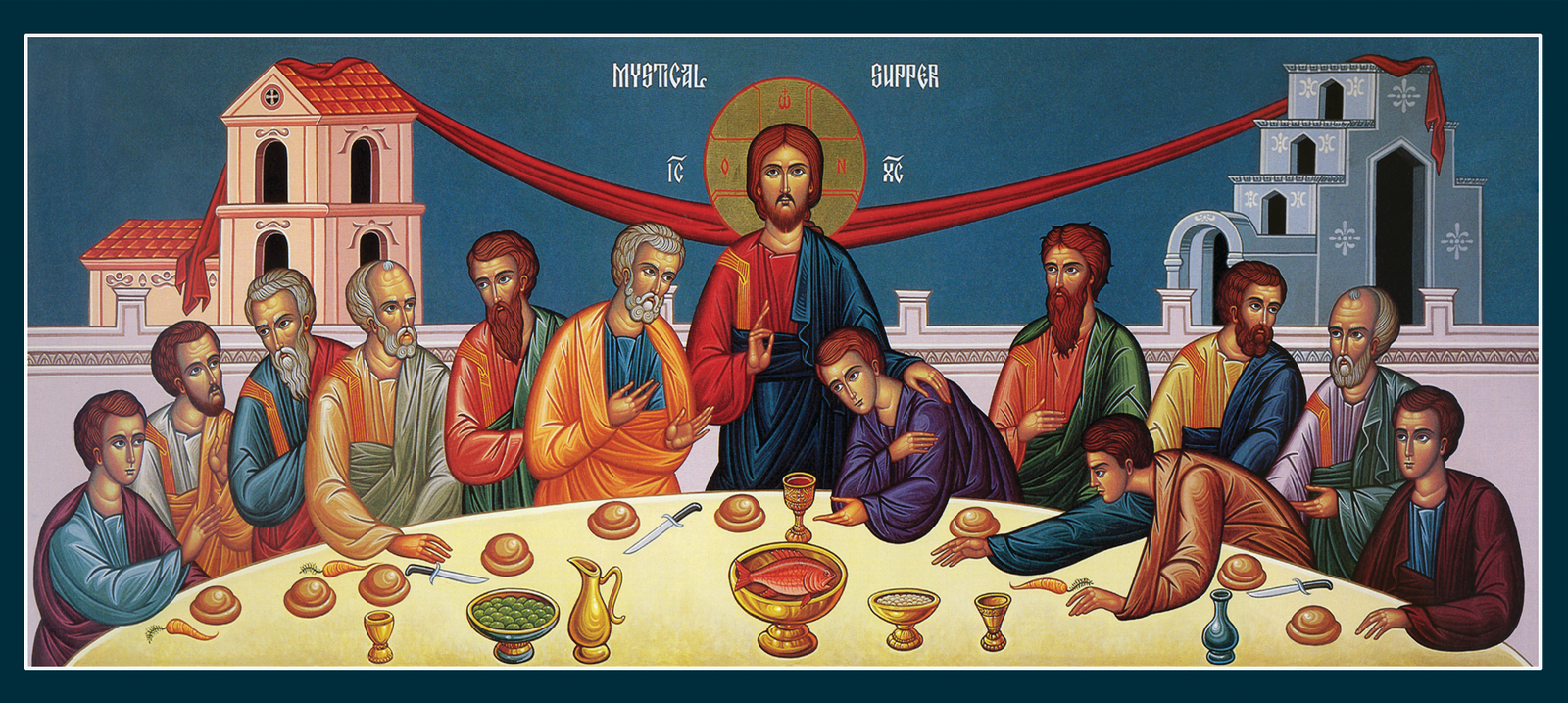
By the hand of Father Luke Dingman, www.lukedingman.com
After supper on this Thursday evening, the dramatic closing moments of Christ’s life followed. After, the washing of the feet, He pointed to the betrayer, inaugurated the Eucharist, and pronounced the new commandment of love for one another. He spoke words of comfort to them, promising the descent of the Holy Spirit to complete man’s union with Christ. His departure, Christ said, would bring joy to them and to the world. Christ took His apostles out into the night where He could see face-to-face His coworkers in the bright light of the full moon. He then withdrew to pray. After the agony of the “bloody sweat”, came the kiss of Judas and His arrest. Thus Jesus became the source of spiritual and physical freedom of mankind. On this day, with greater feeling than ever, Christians come for Holy Communion singing: “Accept me this day, O Son of God, as a partaker of your mystical supper. I will not tell the mystery to Your enemies, nor will I give a kiss as did Judas, but like the thief, I confess to You. Remember me, O Lord, when You come into Your Kingdom.”
Great and Holy Friday
This is a day of strict fast. As little as possible should be eaten on this day. It is the only day in the entire year that no Divine Liturgy of any kind can be celebrated. (The only exception to this is if the Feast of the Annunciation should fall on Good Friday.) The Matins of the Passion of Jesus which include the reading of the Twelve Gospels may be conducted on Friday morning or Thursday evening.
By the hand of Father Luke Dingman, www.lukedingman.com
This service celebrates the holy, saving and awesome Passion of Christ. To take away our sins, Christ willingly endured spitting, scourging, buffeting, scorn, mocking, the purple robe, the reed, sponge, vinegar, nails, spear, and above all, death on the Cross. This service is long, but its content is dramatic and deeply moving. Participation in the prayers and historical sequence of events, as related in the Gospels and hymns, provides a foundation for the great events yet to come. The readings relate to the last instructions of Christ to His disciples, the prophecy of the drama of the Cross, the dramatic prayer of Christ and His new commandment. The Twelve readings of the service are:
John 13:31-18:1 John 18:1-29
Matthew 26:57-75 John 18:28–19:16
Matthew 27:3-32 Mark 15:16-32
Matthew 27:33-54 Luke 23:32-49
John 19:19-37 Mark 15:43-47
John 19:38-42 Matthew 27:62-66
Great and Holy Friday continues with Vespers on Friday afternoon. During this service, the removal of the Body of Christ from the Cross is commemorated with a sense of mourning for the terrible events which took place. Once more, excerpts from the Old Testament are read together with hymns, and again the entire story is related. Apostle Paul, interpreting the dreadful event, exhorts the Church: “For the word of the cross is folly to those who are perishing, but to us who are being saved it is the power of God … we preach Christ crucified … the power of God and the wisdom of God” (1 Cor. 1: 18f).
The Gospel reading, a combination from all four Gospels, mentions Joseph of Arimathea, who took charge of Jesus’ body, wrapped it in a shroud and placed it in a new tomb. Near the end of the service a shroud or plashchanytsia is carried in procession. The shroud itself represents the body of Jesus wrapped in a burial shroud, and is a roughly full-size cloth icon of the body of Christ. It is carried to a spot near the front of the Church, which represents the tomb of Christ and is often decorated with an abundance of flowers. We are reminded that during Christ’s entombment He descends into Hades to free the dead of the ages before His Incarnation. The mournful, “The noble Joseph took down your most pure body from the tree. He wrapped it with a clean shroud, and, with aromatic spices, placed it in a new tomb.” is sung. At the end of the service everyone comes forward to venerate the Shroud.
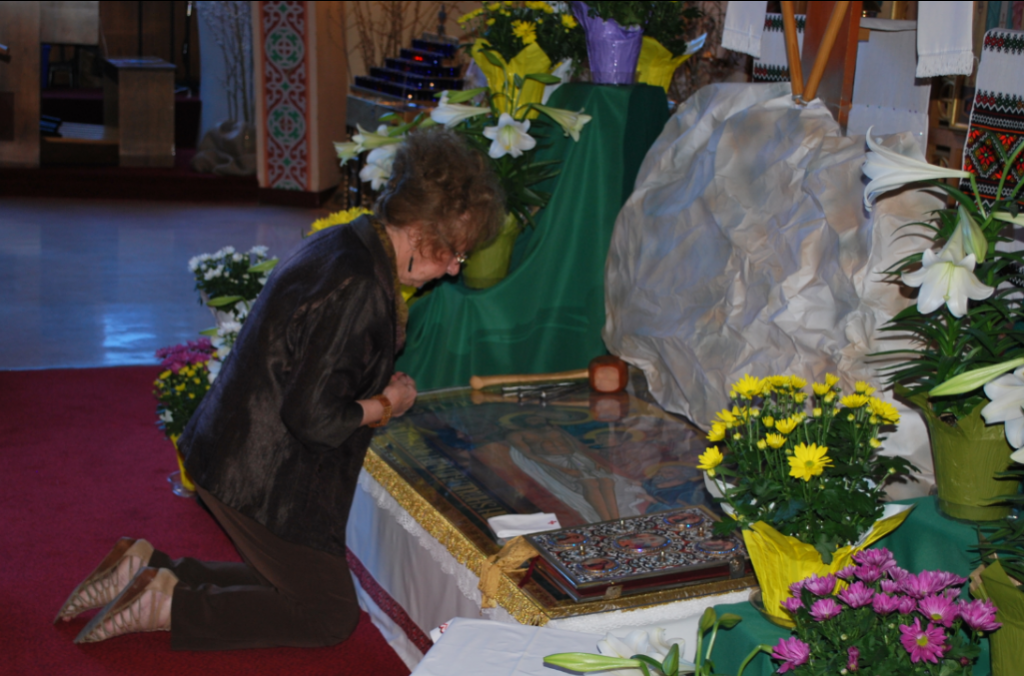
On Friday night, the Matins of Holy and Great Saturday, a unique service known as Jerusalem Matins is celebrated. Much of the service takes place around the tomb of Christ. A unique feature of the service is the chanting of the Lamentations or Praises, which consist of verses chanted by the clergy interspersed between the verses of Psalm 119.
The shroud or plashchanytsia will lay in the tomb until the Paschal Service early Sunday morning. In most churches, the shroud is never left alone, but is accompanied 24 hours a day by someone holding a vigil and praying before it.
Holy Saturday
This day is a day of hope and waiting. On Great and Holy Saturday afternoon, Vespers and a Divine Liturgy of St. Basil is celebrated, marked with readings of Psalms and Resurrection hymn that tell of Christ’s descent into Hades. The “first resurrection of Adam” and the conquering of Death are commemorated.
This service comes from the ancient liturgical tradition of the Church of Constantinople and was its primary Paschal service. It is only at this service that the resurrection Gospel is read. The hymn “Arise O God” from the Psalms was the original primary Paschal hymn before “Christ is Risen” took its place. Because of its place as the ancient Paschal celebration, the service has a bright and resurrectional character.
Holy Pascha
Holy Week comes to an end at sunset of Great and Holy Saturday. On Easter Sunday, the Church celebrates Pascha, the feast of feasts. We celebrate the Lord’s Glorious Resurrection, and we proclaim ХРИСТОС ВОСКРЕС – CHRIST IS RISEN! We gather at Resurrection Matins and sing, “This is the day the Lord has made; let us be glad and rejoice in it!” Our rejoicing continues in the Divine Liturgy where we hear the Gospel proclaimed in as many languages as possible. The Resurrection of Christ strengthens and illuminates our beliefs. It is the guarantee of our salvation, and the divine inheritance that the Church of Christ keeps as its treasure and solid foundation.
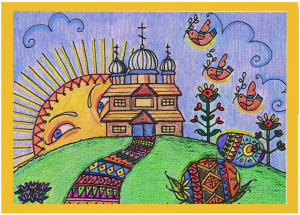
ХРИСТОС ВОСКРЕС – CHRIST IS RISEN!
Source:
Greek Orthodox Archdiocese of America at Great and Holy Week
PETRIWKA – ST. PETER’S FAST – Monday after All Saint’s Sunday to June 28
Petriwka - St. Peter's Fast
Petriwka – St. Peter’s Fast
Monday after All Saint’s Sunday to June 28
Prayer and fasting was a very important part of the lives of the Apostles. They prepared themselves for the coming of the Holy Spirit with prayer and fasting. They prayed and fasted much before they went put to preach the Gospel and only after prayer and fasting did they ordain new presbyters for apostolic work. The Church has always encouraged the faithful to prepare for major feast with prayer and fasting.
We observe four major fasts in the Ukrainian Catholic Church: Pylypiwka (preparation for the Nativity), The Great Fast (preparation for the Resurrection), Petriwka (preparation for the Feast of the Apostles Peter and Paul), and Spasiwka (preparation for the Feast of the Dormition of the Holy Mother of God).
Petriwka, also known as the Fast of the holy Apostles, the Apostolic Fast, the Fast of Peter (Peter’s Fast), or the Summer Fast is a very ancient fast, dating back to the first centuries of Christianity. Simeon of Thessalonica († 1429) explains the purpose of this fast in this manner: “The Fast of the Apostles is justly established in their honour, for through them we have received numerous benefits and for us they are exemplars and teachers of the fast … we fast in honour of the Apostles.”
The Fast of Peter came into practice in the Church through custom rather than law. This fast lasts from the Monday after All Saints’ Sunday to the Feast of the Apostles Ss. Peter and Paul on June 29th. Depending on the date of Easter, the fast can be as long as 6 weeks, or as short as 1 week and 1 day. Petriwka is not as intense as the Great Fast. The present Particular Law of the Ukrainian Greek Catholic Church (2018) prescribes that we abstain from meat and foods that contain meat on Wednesdays and Fridays of the fasting period. However, by local custom, this fast is not obligatory.
As with any fast, it is not about following the law, but the spirit of preparation and sacrifice that accompany whatever actions one takes to observe the fast. However we choose to observe Petriwka, the purpose should be to bring us into a deeper relationship with God and to prepare us to fully celebrate the Feast day of our patrons, Ss. Peter and Paul.
SPASIWKA – FAST OF THE THEOTOKOS – Aug 1 to Aug 14
Spasiwka - Fast of the Theotokos
Spasiwka – Fast of the Theotokos
August 1-August 14
The first two weeks in August in the Eastern tradition are set aside as a time of special observance called the Fast of the Theotokos. As with other fasting periods, this fast precedes a feast of great importance: With this fast, we prepare for the greatest of the Marian feasts – the Feast of the Dormition of the Mother of God, celebrated on August 15th. This fast, called Spasiwka, derived its name from the Feast of “Spasa” (Saviour) or as it is referred to as the Feast of the Transfiguration of Our Lord, (August 6th), that is observed during the period of the fast.
The present Particular Law of the Ukrainian Greek Catholic Church (2018) prescribes that we abstain from meat and foods that contain meat on Wednesdays and Fridays from August 1-14. However, by local custom, this fast is not obligatory.
The Feasts of Transfiguration and Dormition show us how life after resurrection will be realized for us in human flesh: in the glorification, of our bodies after the model of the transfigured Christ, a glorification already bestowed on the Theotokos because of her unique role in the salvation of humanity.
PRE NATIVITY SEASON – PYLYPIWKA -Nov 15 to Dec 24
Christmas is coming… and how will we prepare?
Christmas is coming… and how will we prepare?
As society prepares for Christmas by shopping, decorating, cooking, baking, and celebrating, the Church suggests that we take time to fast, to focus on God and others. Ukrainian Catholics refer to the pre-Christmas fast period as Pylypiwka or St. Philip’s Fast, as it always begins on November 15, the day after the Feast of St. Philip the Apostle.
Fasting has the special consequence of putting things into proper perspective. It is a process by which we become free from and independent of all material things. And as we free ourselves from things outside of ourselves, we also free ourselves from the passions within us that are keeping our interior life in chains. This new freedom will make room in our body for new values. Therefore, fasting liberates us from a kind of bondage and sets us free to enjoy happiness. Fasting allows us to feel our hunger. And feeling our physical hunger can, if we allow it, lead us to feel our spiritual hunger, our hunger for God.
But how can we live out this counter-cultural pre-Christmas season? Do we decline all festive invitations and never set foot in a mall? The Church teaches us that the demands of love come first. Our actions must be loving and charitable, putting the needs of others first. If we are invited to participate in a pre-Christmas gathering, the right thing to do just may be to ‘fast from fasting’.
It is important to approach the fasting with the right attitude. Set for yourselves modest and humble goals. Your fasting can include your exclusion of certain foods or luxuries from your daily routine. While fasting from food, we are challenged to fast from sin, from gossip, from jealousy, from anger, and from other things which, while well within our control, we all too often allow to control us.
Re-direct some of your spare time to give attention to the needs of others around you. We all thirst and need to receive love. Search for ways to give love freely to those who need it most, but might deserve it least. Your life was a gift from God; make it a gift from God to others. Jesus is the greatest gift of all. Introduce Him to a friend or neighbor by inviting them to your church. Offer the needs of others in prayer.
We fast before the Nativity in order to more fully feast and celebrate on the Nativity itself: To acknowledge, obey and give gratitude to God; to beseech His protection and favor; and to be united in asking for pardon, and in promoting our faith – these are all essential for the preparation to celebrate the joy of Christmas; we pray more and we increase our acts of love and compassion. The goal is to free ourselves from our selfish desires, and to be Christ focused.
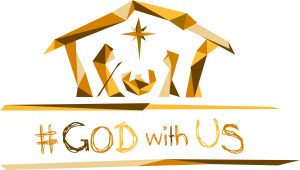
image courtesy the Church of England
Let us approach this time of preparation in the hope that it allows us to experience a new awareness of God’s presence, to realize our need for God, and an increasing desire to love and serve others. Let us then on the Feast of the Nativity of Our Lord all joyfully sing, “God with us” and celebrate on Christmas day and on the days that follow!
Adapted from: St. Philip’s Fast–A Time to Re-focus by Deborah Larmour
Family Life Office Article
Eparchy of Saskatoon November 2013
Pylypiwka - The Pre Nativity Season & Pre-Christmas Fast
As society prepares for Christmas by shopping, decorating, cooking, baking, and celebrating, the Church suggests that we take time to fast, to focus on God and others. Ukrainian Catholics refer to the pre-Christmas fast period as Pylypiwka or St. Philip’s Fast, as it always begins on November 15, the day after the Feast of St. Philip the Apostle.
There are six weeks of Pylypiwka. This period is punctuated with feast days and important reminders of the preparations of our ancestors when they waited for the coming of the Lord…
The 6 Week Journey of Pylypiwka:
CLICK on one of the following:
